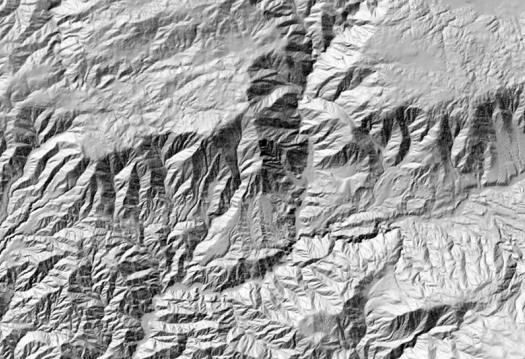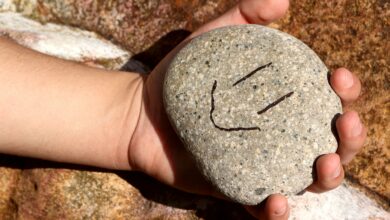13 Tricks to Kick Your Worst Hillshade Lapakgis Habits

Are you tired of struggling with your hillshade maps? Have you tried everything from adjusting the lighting to changing the contrast, but still can’t seem to get it right? Don’t worry; we’ve got you covered! In this blog post, we’re sharing 13 tricks that’ll help kick your worst hillshade Lapakgis habits and create stunningly realistic maps. So grab a cup of coffee, sit back, and let’s turn those hills into works of art!
What is hillshade lapakgis?
Hillshade lapakgis is a digital elevation model (DEM) that is used to create a three-dimensional representation of a landscape. It can be used for both natural and man-made features. Hillshade lapakgis is created by combining a DEM with other data, such as slope, aspect, and curvature.
The first step in creating a hillshade lapakgis is to generate a DEM. A DEM can be generated from various sources, such as LiDAR, photogrammetry, or radar. Once the DEM is generated, it must be converted into a raster file format. Next, the other data mentioned above (slope, aspect, and curvature) must be calculated for each cell in the raster file. Finally, the hillshade lapakgis is created by applying shading to the cells in the raster file based on their slope, aspect, and curvature values.
There are many uses for hillshade lapakgis. It can be used to visualize terrain, create 3D models of landscapes, assess environmental conditions, and much more.
The Different Types of Lapakgis
There are different types of lapakgis, and each has its own strengths and weaknesses. Here is a brief overview of the different types:
The most common type of lapakgis is the single-sided lapakgis. This type is best suited for use on flat terrain, as it can be easily maneuverability. However, its single-sided nature makes it less stable on uneven terrain, so it is not the best choice for use on hillsides or other rough terrain.
The double-sided lapakgis is another common type. This lapakgis is more stable than the single-sided variety, making it a better choice for use on rough terrain. However, its double-sided nature makes it more difficult to maneuver than the single-sided lapakgis, so it is not the best choice for use on flat terrain.
The folding lapakgis is a relatively new type of lapakgis that combines the best features of both the single-sided and double-sided varieties. It is easy to maneuver on flat terrain like the single-sidedlapakgis, but its folding design makes it more stable on uneven terrain like the double-sidedlapakgis. This makes it an ideal choice for use on both types of terrain.
The Pros and Cons of Lapakgis
Lapakgis is a great tool for creating 3D models and landscapes, but it also has its drawbacks. Here are some pros and cons of using Lapakgis:
Pros:
-Lapakgis is a very versatile tool that can be used for a variety of purposes, from creating 3D models to landscape design.
-It is relatively easy to use and learn, especially compared to other 3D modeling software.
-The built-in tools and functionality allow for a lot of creativity and customization.
Cons:
-The learning curve can be steep for some users, particularly those who are new to 3D modeling software.
-Lapakgis can be resource intensive, so it may not be suitable for all computers.
-The subscription cost can be expensive for some users.
What to do if you have a lapakgis addiction
If you’re addicted to lapakgis, there are a few things you can do to try and kick the habit. First, try to cut back on the amount of time you spend using lapakgis. If you’re spending hours every day on the site, try scaling back to just a few minutes. You can also try using lapakgis less frequently, or only using it for specific tasks.
Another thing you can do is to find other activities to occupy your time. If you’re constantly browsing lapakgis, try picking up a new hobby orinterest. This will help take your mind off of lapakgis and give you something else to focus on. Additionally, try spending more time with friends and family members; socializing can be a great way to take your mind off of an addiction.
Finally, if you feel like you can’t kick the habit on your own, there are professional resources available to help you. Therapists who specialize in treating internet addiction can help you identify the root cause of your lapakgis addiction and develop a plan for overcoming it. If you think professional help is necessary, don’t be afraid to seek it out.
How to get help for your lapakgis addiction
If you’re addicted to lapakgis, there’s help available. Here are some ways to get the support you need:
1. Join a lapakgis support group. There are groups available both in person and online that can provide moral support and helpful tips for kicking your addiction.
2. See a therapist or counselor who specializes in treating addictions. They can help you understand the root of your addiction and develop healthy coping mechanisms.
3. Seek out a Lapakgis Anonymous group in your area. This 12-step program is modeled after Alcoholics Anonymous and can be extremely helpful for those struggling with addiction.
4. Get involved with an outdoor activity group that uses lapakgis maps frequently. Being around others who enjoy using lapakgis maps can help normalize your relationship with them and make it easier to moderate your use.
5. Talk to your doctor about your lapakgis addiction and see if they have any recommendations for treatment options.
Alternatives to lapakgis
There are many alternatives to the traditional lapakgis method of creating a shaded relief image. Some of these include using online elevation data, draping a raster image over a three-dimensional surface, or even creating a digital elevation model (DEM) from scratch.
If you have access to high-quality elevation data, you can use that to create a more accurate shaded relief image. You can also use online tools to create a DEM from scratch, which can be draped over a 3D surface for an even more realistic effect.
Creating a shaded relief image doesn’t have to be difficult or time-consuming. With the right tools and techniques, you can create stunning images that accurately represent the topography of an area.
Conclusion
With a little effort and dedication, it is possible to break the hardest of hillshade lapakgis habits. We hope that our 13 tricks have inspired you to start making changes towards improving your workflow and becoming an even better GIS user. Remember, practice makes perfect! So take these tips with you and get out there: try something new, make mistakes and learn from them, explore different techniques – all in order to become a master at hillshade lapakgis. Good luck!



